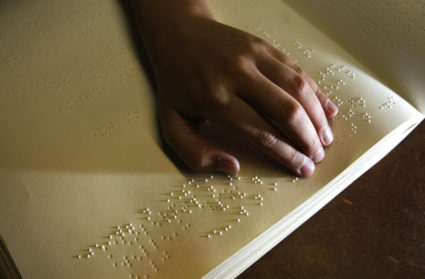
For more than 40 years, Beverly and Dereck Joubert have lived with, photographed and filmed African wildlife. Their images bear…

Few inventors have had such a positive effect on so many lives as Louis Braille, the remarkable educator, innovator and advocate for the blind.
Braille was born about 20 miles east of Paris in Coupvray, France, on Jan. 4, 1809. As a boy of 3, Louis was playing at his father's leather workbench with a sharp cobbler's tool when he poked one of his own eyes, causing severe damage. Like the great American humorist James Thurber, Braille's other eye became inflamed and he developed sympathetic ophthalmia, whereby both the physical wound to one eye and the "sympathetic" inflammation of the other caused him to completely lose his sight by the age of 5.
At 10, Braille was awarded a scholarship to France's prestigious, if poorly resourced, Royal Institute for Blind Youth in Paris. He excelled in his classes and became a wonderfully talented organist and cellist, as well as a kind mentor for the junior students.
Braille first encountered an early predecessor to his tactile writing system in 1821, while he was still an adolescent. Charles Barbier, a former French military officer, had developed a code that soldiers could use to send and read messages in the dark, and he shared his method with the institute. Braille began to adapt the idea into his own refined version, eventually creating his remarkable system of specific, bumpy dot patterns, embossed onto thick pages of paper with each symbol representing a letter in the alphabet, or numbers and other symbols.
In 1829, he published his landmark book, "Method of Writing Words, Music, and Plain Songs by Means of Dots for Use by the Blind and Arranged for Them," a musical code for blind musicians. He also wrote guides for the blind on mathematics, geometrical figures, maps and musical symbols.

After graduation, Braille was asked to stay at the Royal Institute as an instructor and by 1833 was promoted to professor. But Braille's system was not formally adopted by the Royal Institute until 1854, two years after Braille died. The system soon became the method of choice among blind French-speakers, and by the 1880s had spread to virtually every school for the blind in the world. Today, Braille remains a major form of communication–not only for book publishing but also on computer terminals, in buildings, and for email, mathematical and scientific notation.
Braille was never the paragon of health. He developed tuberculosis as a young man and, in true consumptive manner, it spread throughout his lungs, making the last 16 years of his life quite difficult. At age 40, he had to retire. He died 170 years ago this week, on Jan. 6 at age 43, and was buried in the Pantheon, along with so many of France's heroes.
This vanguard teacher offered edification and access to information and creativity to the visually impaired. Braille's profile has graced postage stamps, medals, and coins, his life story told in books, movies, plays and songs. In a 1952 essay, poet T.S. Eliot reflected that, "Perhaps the most enduring honor to the memory of Louis Braille is the half-conscious honor we pay him by applying his name to the script he invented…. His memory has in this way a security greater than that of the memories of many men more famous in their day."
Sustain our coverage of culture, arts and literature.